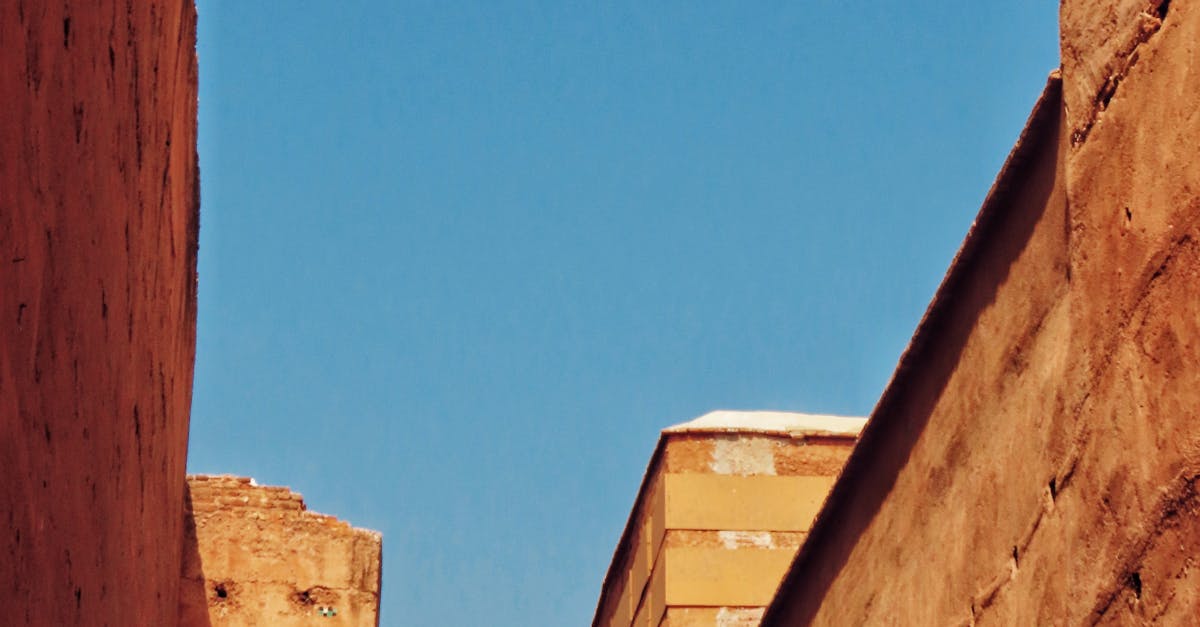
Benefits of Using Cork Cladding in Sustainable Architecture
Table Of Contents
Lightweight Nature
Cork cladding is notably lighter compared to traditional construction materials like brick and concrete. This lightweight nature makes it easier for builders to handle, transport, and install, thereby reducing the overall labour costs associated with a construction project. The ease of manipulation allows for more flexibility in design and can significantly speed up the installation timeline, making it an appealing option for architects and builders.
Moreover, the reduced weight of cork cladding minimises the structural load on buildings. This aspect is particularly beneficial in areas with strict building codes or in projects that involve renovation of older structures. By using lighter materials, modifications can be made with less reinforcement, resulting in potential savings in both materials and construction efforts. This innovative approach aligns well with the principles of sustainable architecture, encouraging the use of resources that are effective yet environmentally friendly.
Simplifying Installation Processes
Cork cladding offers a lightweight solution, making transportation and handling significantly easier for construction crews. The reduced weight enables quicker installation, often leading to lower labour costs and shorter project timelines. Additionally, the interlocking design of cork panels simplifies the process further, allowing for a seamless fit that requires minimal adjustments.
The ease of installation does not compromise durability. Cork cladding can be fitted with standard tools, eliminating the need for expensive or specialised equipment. This accessibility allows builders and DIY enthusiasts alike to take on projects with confidence, enhancing the overall appeal of cork as a sustainable architectural choice.
Resistance to Moisture and Mold
Cork has a unique cellular structure that makes it inherently resistant to moisture absorption. This natural characteristic prevents water from seeping into the material, thereby reducing the risk of mould and mildew growth. In environments where humidity levels can fluctuate, such as coastal areas or places with heavy rainfall, cork cladding provides a reliable barrier.
The resistance to moisture and mould is particularly beneficial for preserving the integrity of building materials. By minimising the likelihood of water damage, cork contributes to the longevity of structures. This advantage not only sustains the aesthetic appeal of the architecture but also mitigates potential health hazards associated with mould exposure.
Promoting Healthier Indoor Environments
Cork cladding contributes significantly to improving indoor air quality. It possesses natural properties that help regulate humidity levels within living spaces. This capability creates a more comfortable environment while minimising the risk of allergens and irritants. The cellular structure of cork traps airborne particles, preventing them from circulating freely.
Using cork also decreases the likelihood of mould and mildew growth in indoor settings. Its resistance to moisture ensures that excess dampness does not compromise the health of occupants. Cork's ability to absorb sound further enhances the quality of indoor life by reducing noise pollution. These features collectively make cork an excellent choice for promoting wellness within built environments.
Fire Resistance Features
Cork cladding is known for its inherent fire-resistant properties, which can be a crucial asset in building design. The structure of cork consists of cell walls that contain natural substances, providing an effective barrier against flames. This unique composition limits the spread of fire, offering valuable time for evacuation and reducing potential damage to property.
Incorporating cork into construction not only enhances safety but also supports compliance with building regulations concerning fire safety. Its performance in fire resistance tests demonstrates that it does not release harmful toxins or smoke when exposed to high temperatures. This characteristic contributes to a safer environment, particularly in urban settings where fire hazards are a significant concern.
Ensuring Safety in Construction
Cork cladding offers notable fire-resistant properties, which significantly enhance safety in construction projects. This natural material does not readily ignite, providing valuable time for occupants to evacuate in the event of a fire. Its ability to withstand high temperatures contributes to reduced fire hazards, making it an ideal choice for building facades and interior finishes.
Moreover, cork's unique cellular structure makes it an effective insulator against sound, adding another layer of safety by minimising noise pollution within buildings. This helps ensure that occupants can maintain a more peaceful environment, which is beneficial for both residential and commercial spaces. The lightweight nature of cork also simplifies the construction process, further reducing the risks associated with material handling on-site.
FAQS
What are the main benefits of using cork cladding in sustainable architecture?
Cork cladding offers several benefits, including its lightweight nature, ease of installation, resistance to moisture and mould, promotion of healthier indoor environments, and fire resistance features.
How does the lightweight nature of cork cladding simplify installation?
The lightweight nature of cork cladding makes it easier to handle and install, reducing the need for heavy lifting equipment and making the construction process quicker and more efficient.
Is cork cladding effective against moisture and mould?
Yes, cork cladding is naturally resistant to moisture and mould, making it an ideal choice for areas prone to humidity, as it helps maintain the integrity of the building and promotes a healthier living environment.
How does cork contribute to healthier indoor environments?
Cork has natural properties that help regulate indoor humidity and temperature, reducing allergens and improving air quality, thus promoting healthier indoor environments.
What fire resistance features does cork cladding have?
Cork cladding has inherent fire resistance properties that can help slow down the spread of flames, providing an additional layer of safety in construction and contributing to overall fire safety regulations.
Related Links
How to Install Cork Cladding for Your HomeDesigning with Cork Cladding: Style and Functionality
Cork Cladding: A Natural Solution for Acoustic Insulation
The Environmental Advantages of Cork Cladding
Innovative Uses of Cork Cladding in Modern Interiors
Cork Cladding: A Versatile Option for Exterior Design
Comparing Cork Cladding to Other Natural Materials
Maintenance Tips for Cork Cladding in Australian Climates